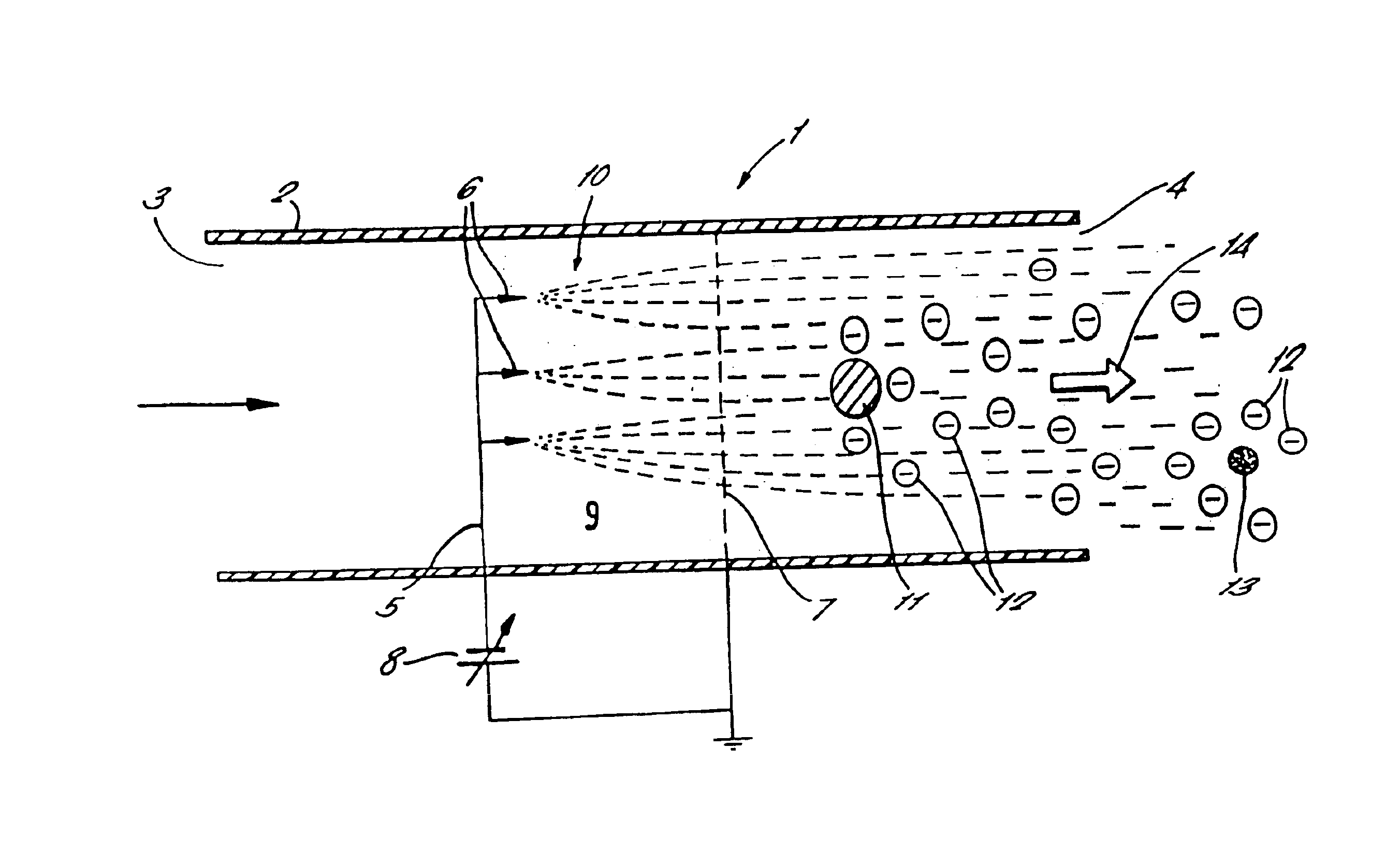Method and apparatus for dispersing a volatile composition
a volatile composition and air technology, applied in the field of methods and apparatus for dispersing volatile compositions into the air, can solve the problems of affecting the effect of disinfection, and causing allergic reactions in some people, and affecting the health of people, and prolonging or frequent exposure to synthetic insecticides
- Summary
- Abstract
- Description
- Claims
- Application Information
AI Technical Summary
Benefits of technology
Problems solved by technology
Method used
Image
Examples
example 1
The ion wind generating device as described with reference to FIG. 2 was used to generate an ion wind airflow of 0.5 m / second with a spacing of 25 mm between the electrodes.
With an ion wind travelling at 0.5 m / second; 1.45 g of a fragrance (Lavender & Camomile F537.956 ex Quest) was evaporated over a 24 hour period from a polyether sleeved wick in communication with a source of the fragrance. Sensory tests showed that this amount of evaporation corresponds to an appropriate strength of fragrance to perfume a room approximately 16 metres square. Lower ion wind speeds will give lower levels of perfume delivery and higher ion wind speeds higher levels of perfume delivery.
example 2
The Bioelectrostatics Research Centre of the University of Southampton developed a new protocol to test the use of an ion wind to disperse an insect repellent. A specially constructed test room was used as the test chamber. The door of the room was modified, so that it had a rectangular hole, measuring 62.5 cm×62.5 cm at the base. Two circular holes measuring 10 cm were cut in the door at 141 cm and 65 cm from the ground. The lower shelf was used to hold an ion wind generating device in position during the test. The ion wind generating device was constructed from a 6 mm thick Perspex tube (100 mm external diameter) in which the electrodes were housed. The high voltage electrode was a seven pin brass electrode, whilst the other electrode was a coiled electrode made of brass. The device was otherwise constructed and connected in an manner identical to that described with reference to FIG. 1. A small shelf was constructed just below the hole to allow a glass vial containing the repelle...
PUM
| Property | Measurement | Unit |
|---|---|---|
| electric field | aaaaa | aaaaa |
| dc electrical potential | aaaaa | aaaaa |
| diameter | aaaaa | aaaaa |
Abstract
Description
Claims
Application Information
 Login to View More
Login to View More - R&D
- Intellectual Property
- Life Sciences
- Materials
- Tech Scout
- Unparalleled Data Quality
- Higher Quality Content
- 60% Fewer Hallucinations
Browse by: Latest US Patents, China's latest patents, Technical Efficacy Thesaurus, Application Domain, Technology Topic, Popular Technical Reports.
© 2025 PatSnap. All rights reserved.Legal|Privacy policy|Modern Slavery Act Transparency Statement|Sitemap|About US| Contact US: help@patsnap.com



